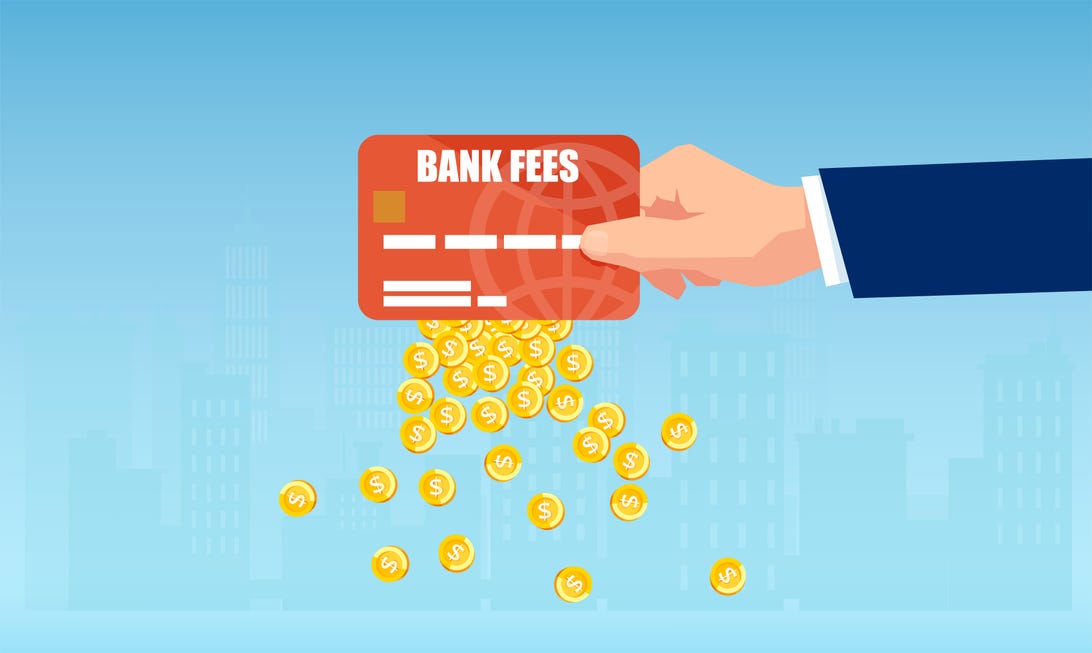
Whether you’ve overdrawn by $1 or $100, overdraft fees can cost you as much as $30 per transaction, depending on your bank. Overdraft fees may be charged when you don’t have enough money in your account to cover a purchase. Instead of declining the charge, banks cover the amount for you, then hit you with fees — on top of the money you’ll owe for any purchases made.
A predatory mechanism used by many US banks, overdraft fees are often meted out to those who are least able to afford them. Roughly 9% of US consumers overdraw their accounts more than 10 times a year — and this 9% of individuals accounts for approximately 80% of all overdraft and non-sufficient funds fees collected annually, according to the Consumer Financial Protection Bureau.
And overdraft fees continue to increase. In 2000, the average overdraft fee was $23.74, according to a Bankrate study. Today, they cost $33.58 on average. Banks are collecting massive amounts of money from Americans living paycheck to paycheck, earning $12.4 billion from overdraft fees in 2020, according to the 2021 FinHealth Spend Report conducted by the Financial Health Network.
As overdraft fees come more and more under fire, some banks have recently decided to end the practice, like Capital One and Citibank. Other banks have simply cut back on the fee amount, like Bank of America which announced it is slashing fees from $35 to $10 starting in May.
If you find that your bank hasn’t done away with overdraft fees, though, there are ways to protect yourself from these costly penalties. Below, I’ll explain what overdraft fees are, how they work — and, most importantly, what you can do to avoid them.
What is an overdraft fee?
An overdraft fee is a bank fee you incur when you spend more money than you have available in your checking account.
For example, if you have $20 in your checking account and buy a $30 item, your bank will clear the transaction — but charge you an overdraft fee. Your bank will also take the remaining $10 that’s owed when you make your next deposit.
How much do overdraft fees cost?
Overdraft fees vary by financial institution, but typically you’re looking at $30 per overdrawn transaction, according to the Federal Deposit Insurance Corporation. And the fee is fixed regardless of the transaction amount; you’re charged the same whether you overdraw $1 or $100.
How to avoid overdraft fees.
1. Opt out. Your bank or credit union can’t charge overdraft fees unless you’ve agreed to them, according to the CFPB. Once you opt out, transactions that exceed your available balance will be declined. If you write a check and it bounces — meaning a merchant returns the check to your bank due to insufficient funds — your bank may hit you with a non-sufficient funds fee. It’s essentially the same fee — exacted when you don’t have enough money to cover a transaction — called by a different name.
2. Link your savings account with your checking account. When you link accounts, any amount not covered by your checking account will automatically be covered by your savings account. Assuming you have money in savings, this is a far less costly option.
3. Link your checking account to a line of credit. Contact your financial institution to see if you can connect your checking account to a credit card. You may still have to pay a fee and interest — but it’s usually cheaper than paying the overdraft fee, according to the CFPB.
4. Sign up for low-balance alerts. Your bank may offer low-balance alerts through email or text message. These alerts will notify you when your balance falls below a certain threshold, which you can dictate.
5. Open a checking account without overdraft fees. Some banks offer checking accounts that don’t charge overdraft fees and other banks have eliminated them. Capital One, Ally, Discover, Chime, Axos and Aspiration all offer accounts with no overdraft fees. Moreover, some banks are starting to limit the fee amount, like Bank of America, which will cut its fee from $35 to $10 starting in May.
A political solution?
Overdraft fees can pile up quickly, and they’re costing Americans billions of dollars every year. Critical calls are ringing in from legislators — both the US House of Representatives and US Senate proposed bills last year to limit overdraft fees in order to protect consumers. Those bills haven’t moved beyond the initial introduction phase yet, and so, for the time being, overdraft fees continue to hang over us.
The editorial content on this page is based solely on objective, independent assessments by our writers and is not influenced by advertising or partnerships. It has not been provided or commissioned by any third party. However, we may receive compensation when you click on links to products or services offered by our partners.


